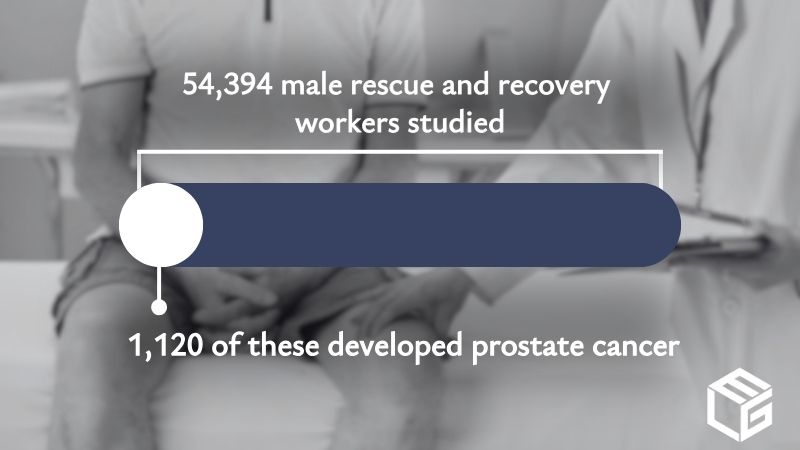-
About »
- Insulin MDL
-
Cases »
- Diseases
- Testimonials
- Government
- Contact
- Get Help Now
-

The toxic releases of the 9/11 attacks have led to a concerning rise in prostate cancer among those present in the exposure zone. This insidious disease often develops slowly and without noticeable symptoms in its early stages, resulting in delayed diagnosis. If you were present at the World Trade Center, the Pennsylvania crash site, the Pentagon crash site, or the New York City Exposure Zone, and have since been diagnosed with prostate cancer, you may be eligible for financial compensation through the 9/11 Victim Compensation Fund. You can reach out to us and we can help guide you through the process.
Claim ApplicationStudies conducted over the years have provided compelling evidence linking exposure to WTC dust to a higher incidence of prostate cancer among rescue and recovery workers. The dust, which contained a toxic mix of carcinogens like asbestos, chromium, benzene, and dioxins was inhaled by these workers as they sifted through the rubble and searched for survivors.
The study followed a large group of 54,394 male rescue and recovery workers. The researchers found that 1,120 of these men developed prostate cancer. While the connection wasn't immediately clear, years later, a significant increase in their risk became apparent. The earlier they arrived at the disaster site, the higher their risk seemed.
It may take about 8 to 15 years for prostate cancer to develop after environmental exposure. So, it is necessary to watch out for the following symptoms if you have been exposed:
If you notice any of the above, make an appointment with your doctor for evaluation, as early diagnosis is key. If you are a first responder or survivor of the 9/11 terrorist attack and have developed prostate cancer, you are likely to be eligible for 9/11 Victim Compensation Fund benefits.
A 9/11 victim with prostate cancer receives compensation according to the same formula used for other health conditions: "non-economic loss + economic loss – collateral offsets." If you were exposed to toxins at the World Trade Center site during or after the 9/11 attacks and subsequently developed prostate cancer, you may be eligible for compensation from the 9/11 Victim Compensation Fund. Although the average payout can vary, the severity of your condition can significantly impact the amount you receive. Our team of experienced attorneys has been serving victims of toxic exposure for over three decades and is ready to do the same for you.